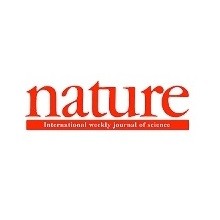
تعارض رونویسی-تکثیر
چکیده
وقوع مکرر رونویسی و تکثیر DNA در سلول ها منجر به برخوردهای بسیار و در نتیجه تعارض بین تشکیلات رونویسی و تکثیر می شود. این تعارض ها یک منبع اصلی برای عدم ثبات ژنوم هستند که مشخصه سلول های سرطانی است. چگونگی پیشرفت تشکیلات تکثیر در یک مولکول DNA که توسط RNA پلیمراز اشغال شده است، یک سوال قدیمی است. در اینجا، داده های اخیر مربوط به ارتباط زیستی تعارض تکثیر- رونویسی و عوامل و مکانیسم هایی که در پیشگیری یا حل آن ها، عمدتا در یوکاریوت ها دخیل هستند را بررسی می کنیم. بر اساس این داده ها، دیدگاه فعلی ما در مورد چگونگی ایجاد مانع توسط رونویسی برای تکثیر، از جمله تنش پیچیدگی و ساختارهای DNA غیر B، و فرآیندهای مختلف سلولی تکامل یافته برای حل آن ها ارائه می شود.
چگونه برخورد رخ می دهد؟
تفاوت اساسی بین تشکیلات رونویسی و تکثیر این است که هولوآنزیم RNA پلیمراز elongating، که شامل یک زیرواحد پلیمراز است، DNA دو رشته را در بر می گیرد. زنجیره RNA در حال تشکیل، در کیسه ی فعال RNA پلیمراز سنتز می شود، که در آنجا یک هیبرید RNA-DNA پویا را تشکیل می دهد که 9-11 نوکلئوتید طول دارد (شکل 1a). در مقابل، هولوآنزیم DNA پلیمراز شامل دو زیر واحد پلیمراز است (DNA Pol III در باکتری ها و Pol ε و Pol δ DNA در یوکاریوت ها) که هر کدام از آن ها روی یک DNA الگوی تک رشته-ای(ssDNA) کار می کنند (شکل 1b). علاوه بر این، در حالی که چندین RNA پلیمراز فعال می توانند به طور همزمان یک ژن را رونویسی کنند، رپلوزوم به تنهایی حرکت کرده و توسط یک دوشاخه ی همانندسازی ثانویه دنبال نمی شود. صرف نظر از اینکه آیا برخوردها به صورت در یک جهت هستند یا جهت گیری سر به سر دارند (شکل 2)، دوشاخه ی همانندسازی نمی تواند از یک RNA پلیمراز elongating عبور کند، بنابراین برخورد آن ها باعث ایجاد تعارض می شود (9، 10). هرچند پیش روی دوشاخه ی همانندسازی ممکن است تحت تأثیر برخوردها در هر دو جهت قرار گیرد، داده ها نشان می دهند که پیامدهای این برخوردها در جهت گیری سر به سر چشمگیرتر است (11،12). در صورت افزایش برخوردها در سیستم های مصنوعی مخمر در جهت گیری سر به سر، مکان های توقف همانندسازی با روش الکتروفورز ژل دوبعدی تشخیص داده شد و نوترکیبی بیش از حد مشاهده شد (12). در مقابل، جهت گیری هم جهت منجر به توقف تکثیر یا سطوح بالای نوترکیبی بیش از حد نمی شود. یک توضیح ممکن برای این تفاوت این است که برخوردهای هم جهت ممکن است زمانی که RNA پلیمراز، رونویسی را به پایان برساند، تا حدی حل شود.
Abstract
The frequent occurrence of transcription and DNA replication in cells results in many encounters, and thus conflicts, between the transcription and replication machineries. These conflicts constitute a major intrinsic source of genome instability, which is a hallmark of cancer cells. How the replication machinery progresses along a DNA molecule occupied by an RNA polymerase is an old question. Here we review recent data on the biological relevance of transcription–replication conflicts, and the factors and mechanisms that are involved in either preventing or resolving them, mainly in eukaryotes. On the basis of these data, we provide our current view of how transcription can generate obstacles to replication, including torsional stress and non‑B DNA structures, and of the different cellular processes that have evolved to solve them.
How do collisions occur?
A basic difference between the transcription and replica‑ tion machineries is that the elongating RNA polymerase holoenzyme, which comprises one polymerase subunit, embraces the double-stranded DNA. The nascent RNA chain is synthesized in the active pocket of the RNA poly‑ merase, where it forms a dynamic RNA–DNA hybrid that is 9–11 nucleotides in length (FIG. 1a). By contrast, the elongating DNA polymerase holoenzyme consists of two polymerase subunits (DNA Pol III in bacteria and DNA Pol ε and Pol δ in eukaryotes), each working on a single-stranded DNA (ssDNA) template (FIG. 1b). Furthermore, whereas several active RNA polymerases can simultaneously transcribe the same gene, replisomes move alone and are not followed by a second replication fork. Regardless of whether collisions are co‑directional or in head‑on orientation (FIG. 2), the replication fork cannot progress past an elongating RNA polymerase, and so their encounters cause conflicts9,10. Although rep‑ lication fork progression may be affected by collisions in both orientations, data suggest that the consequences of collisions are more dramatic in the head‑on orien‑ tation11,12. When encounters were promoted in yeast artificial systems in a head‑on orientation, replication pause sites were detected by 2D‑gel electrophoresis and hyper-recombination was observed12. By contrast, co‑ directional orientation did not lead to replication pauses or high levels of hyper-recombination. A possible explan‑ ation for this difference is that co‑directional encounters may in part be resolved once the RNA polymerase terminates transcription.
چکیده
چگونه برخورد رخ می دهد؟
عناصر CIS تاثیرگذار بر برخوردها
ابرمارپیچ شدن DNA
ساختارهای DNA غیر B و هیبریدهای RNA-DNA
مکانیسم هایی برای جلوگیری از تعارض ها
تشکیلات رونویسی RNA پلیمراز
بسته 1 | محل های شکننده به عنوان نقاط داغ برخوردهای همانندسازی- رونویسی
موانع دوشاخه ی همانندسازی
DNA هلیکاز RECQL5
تغییر وضع کروماتین
تعارضات و پاسخ آسیب DNA
جلوگیری از تعارض همانندسازی-رونویسی با DDR
جعبه 2 | انکوژن ها و برخوردهای همانندسازی- رونویسی
حل تعارض توسط BRCA و پروتئین های کم خونی فانکونی
نتیجه گیری و دیدگاه ها
Abstract
How do collisions occur?
Cis-elements affecting collisions
DNA supercoiling
Non B DNA structures and RNA–DNA hybrids
Mechanisms for preventing conflicts
The RNA polymerase transcription apparatus
Replication fork barriers
The RECQL5 DNA helicase
Chromatin remodeling
Conflicts and the DNA damage response
Prevention of transcription–replication conflicts by the DDR
Conflict resolution by the BRCA and Fanconi anaemia proteins
Conclusions and perspectives
- ترجمه فارسی مقاله با فرمت ورد (word) با قابلیت ویرایش، بدون آرم سایت ای ترجمه
- ترجمه فارسی مقاله با فرمت pdf، بدون آرم سایت ای ترجمه
